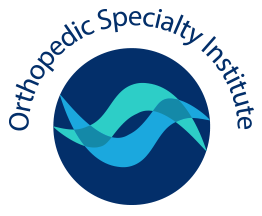
Tennis elbow, also referred to as lateral epicondylitis, is a condition that affects the muscles and tendons in your arm. It is caused by repetitive arm motions, such as those often used when playing tennis. If you are experiencing pain in your elbow, you may have this condition. This blog post will discuss the symptoms, causes, and treatment options for this condition. We will also provide some tips on preventing this condition from occurring.
Symptoms
Some of the common symptoms include:
Stiffness: You may find that your arm is stiffer than usual in the morning or after you have not used it for a while.
Pain: You may experience pain in your elbow, especially when moving your arm or using your hand.
Tenderness: The muscles and tendons around your elbow may be tender to the touch.
Weakness: You may find that your arm feels weak and tired, especially after using it for a prolonged period. You might experience shaking when trying to lift items.
What Causes Tennis Elbow?
The most common cause of is the repetitive use of your arm. This can include playing sports, such as tennis or golf, but it can also be caused by everyday activities like typing on a keyboard or lifting objects.
Posture is another common cause of tennis elbow. If you sit for long periods or spend a lot of time on your phone, you could be putting extra strain on the muscles and tendons in your arm. Another cause is trauma to the arm, such as a fall or blow to the elbow.
It is important to understand that not only athletes can get this condition. It is one of the most common overuse injuries seen in people who do not participate in sports.
How is Tennis Elbow Diagnosed?
If you think you may have the condition, your doctor will usually begin by asking about your symptoms and medical history. They will also examine your arm to look for signs of inflammation or tenderness. They may recommend that you have an X-ray or MRI to rule out other causes of pain, such as a fracture.
How is It Treated?
There are various treatment options available for tennis elbow, depending on the severity of your condition. Some of the most common treatments include:
Rest: Resting your arm and avoiding activities that cause pain is essential for healing your injury. Your doctor may recommend using a brace or splint to help support the injured area while healing.
Activity Modification: You should also avoid any activities that put extra strain on your elbow, such as lifting heavy objects or gripping with your palm facing down.
Physical Therapy: A physical therapist can teach you exercises to improve strength and flexibility in the affected area. They may also use massage or heat therapy to help reduce pain and inflammation.
Medications: Non-steroidal anti-inflammatory drugs (NSAIDs), such as ibuprofen, can help reduce pain and inflammation. In some cases, your doctor may prescribe a corticosteroid injection to help relieve symptoms.
Surgery: Surgery is rarely needed to treat this condition. However, if other treatments have failed in rare cases, surgery may be recommended to remove the damaged tissue.
Risk Factors
Several things can increase your risk of developing tennis elbow. Some of the most common risk factors include:
Age: This condition is most common in people between 40 and 60 years.
Gender: Men are more likely to develop the condition than women, although it can affect anyone at any age.
Occupation: People who perform repetitive movements as part of their jobs, such as painters or musicians, are more prone to this condition.
Sports: Certain sports, such as tennis and golf, can increase your risk.
Prevention
There are several things that you can do to reduce your risk of developing this condition. Some tips for preventing include:
Warm-up before physical activity: It is important to warm up your muscles before any physical activity. This can help reduce the risk of muscle strain or other injuries.
Use proper form: When performing any activity, be sure to use proper form to avoid putting unnecessary strain on your muscles and joints.
Stretch regularly: Stretching is an excellent way to improve flexibility and prevent injury. Try to stretch after your muscles are warm, such as after a workout or bath.
Use proper equipment: When playing sports, be sure to use the appropriate equipment for your skill and fitness level. Using improper equipment can increase your risk of injury.
Get plenty of rest: Rest is important for preventing muscle strain and overuse injuries. Be sure to get enough sleep and take breaks during extended periods of activity.
Proper posture: Maintaining good posture can help reduce the risk of developing many types of injuries, including tennis elbow. Try to keep your shoulders back, and your core engaged when sitting or standing.
When to See a Doctor
If you are experiencing pain and inflammation in your elbow, see a doctor for diagnosis and treatment. Early intervention is vital for preventing the condition from becoming more severe. Some symptoms that may indicate you need medical attention include:
• Pain that persists for more than a few weeks
• Severe or constant pain
• Inability to move your arm normally
• Inability to use your arm or hand normally
• Pain that is worse at night
• Pain that radiates from the elbow down into the forearm and wrist
• Swelling or tenderness in the elbow area
If you are experiencing any of these symptoms, see a doctor as soon as possible for evaluation and treatment. Early diagnosis and treatment is essential for preventing long-term damage to the elbow joint.
Conclusion
If you have elbow pain, it is important to see a doctor for diagnosis and treatment. It is also essential to rest the affected area until your symptoms improve. Be sure to follow your doctor’s instructions regarding physical activity and medications, as these can help prevent further damage to the elbow joint.
In Fort Lauderdale, Orthopedic Specialty Institute specializes in sports related injuries like Tennis Elbow.
Dr. Erol Yoldas and Dr. Martin Weaver are available to help you get back on track! Please contact our office at 954-866-9699 or by requesting an appointment online here. Same day appointments are now available!
